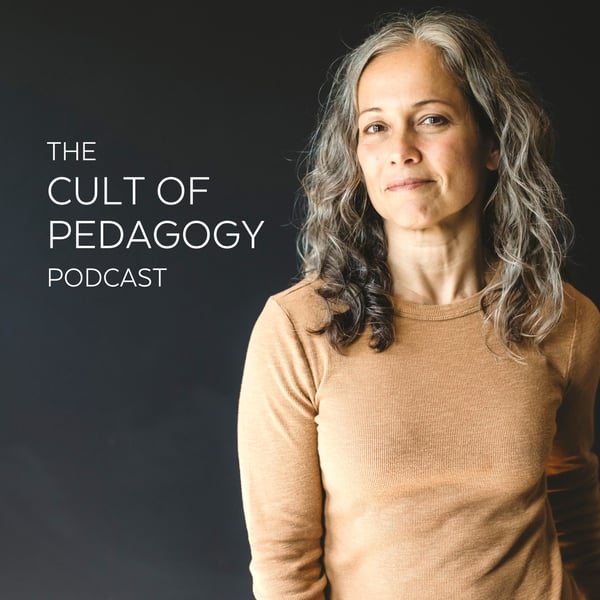227: Two Effective Ways to Teach Annotation
The Cult of Pedagogy Podcast
Jennifer Gonzalez
4.8 • 2.4K Ratings
🗓️ 28 April 2024
⏱️ 66 minutes
🧾️ Download transcript
Summary
Annotation can be a powerful way to improve comprehension and increase engagement, but its effectiveness can vary depending on how it's taught. In this episode, two teachers share their classroom-tested approaches to teaching students how to effectively annotate texts: 3rd grade teacher Andrea Castellano and high school English teacher Irene Yannascoli.
Thanks to Listenwise and Studyo for sponsoring this episode.
To read a full transcript of this conversation, visit cultofpedagogy.com/art-of-annotation/.
Transcript
Click on a timestamp to play from that location
| 0:00.0 | This is Jennifer Gonzales, welcoming you to episode 227 of the cult of pedagogy podcast. |
| 0:05.0 | In this episode, we're going to talk about two effective classroom-tested ways to teach students |
| 0:10.0 | how to mark up and take notes on a text, also known as annotation. If you would probably see my handwriting on some of the pages, you'd also see lots of underlining, brackets around whole paragraphs and |
| 0:37.4 | check marks, question marks and exclamation points in the margins. The more of |
| 0:42.3 | these marks and notes a book has, the more I probably got out of it. |
| 0:46.0 | Every time I stopped to take a note or make a mark, I was processing what I read more deeply, making connections, reminding myself of things I wanted to remember later. |
| 0:56.7 | And when I need to return to one of those books to pull out some key information or ideas, I |
| 1:01.0 | flip through and look for those marks, knowing they'll serve as road maps to the things |
| 1:05.8 | that resonated most with me. |
| 1:08.6 | No one ever taught me to do this. |
| 1:10.5 | I think at some point I started noticing books with notes scribbled in them and I thought, |
| 1:15.0 | oh wow I didn't know you could do that. |
| 1:17.2 | And from then on if I owned a book, I was going to have a pen nearby when I read it. |
| 1:22.0 | In the world of literacy instruction, many teachers would |
| 1:24.8 | call this process annotation. It's a way of reading actively and making your |
| 1:29.6 | thinking visible and it can improve comprehension of challenging texts. |
| 1:34.0 | Although some people develop their own style of annotation independently, |
| 1:39.0 | presumably a natural outcome of regular exposure to good books and the permission to write in them, |
| 1:45.0 | others may benefit from some instruction. |
| 1:48.0 | While annotation is taught in many classrooms, the way it's taught can vary widely and some approaches work better than |
| 1:55.2 | others at helping students find an annotation style that works for them inside |
| 2:00.5 | and outside the classroom. |
... |
Transcript will be available on the free plan in -336 days. Upgrade to see the full transcript now.
Disclaimer: The podcast and artwork embedded on this page are from Jennifer Gonzalez, and are the property of its owner and not affiliated with or endorsed by Tapesearch.
Generated transcripts are the property of Jennifer Gonzalez and are distributed freely under the Fair Use doctrine. Transcripts generated by Tapesearch are not guaranteed to be accurate.
Copyright © Tapesearch 2025.

